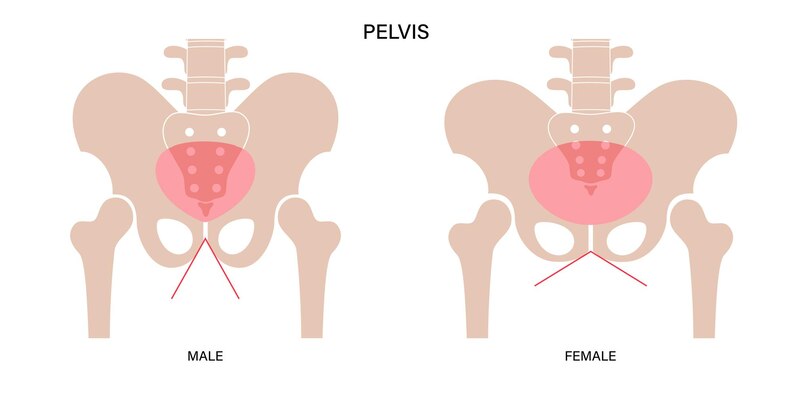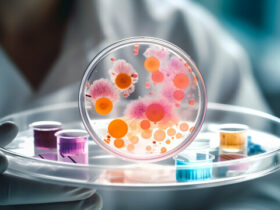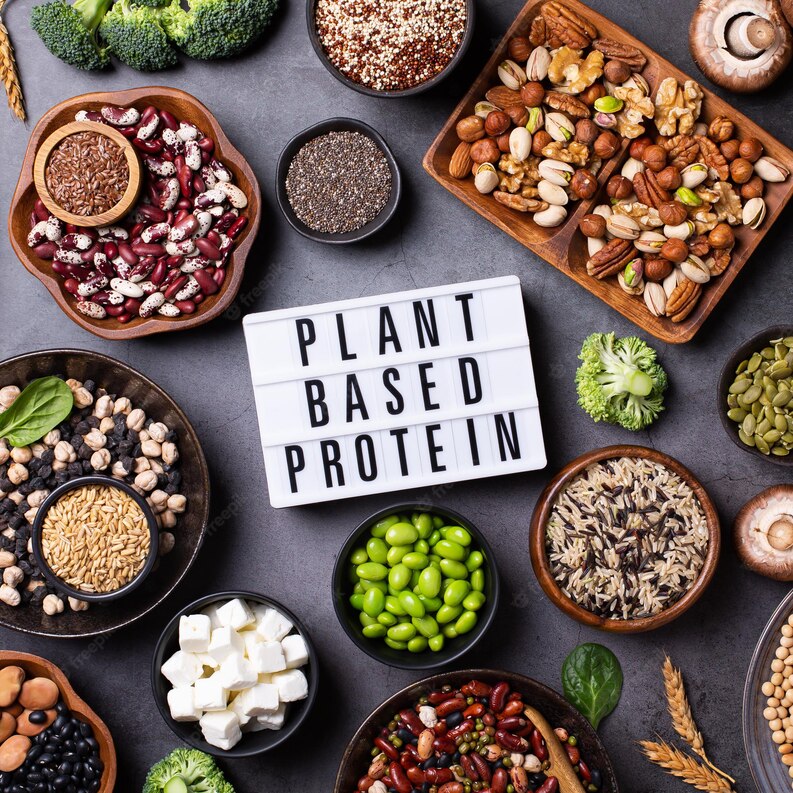Whether it’s seasonal sneezing or skin irritations, we understand the impact allergies can have on your daily life. Allergies can affect people of all ages, even babies. Allergies can be a source of immense discomfort, affecting millions worldwide.
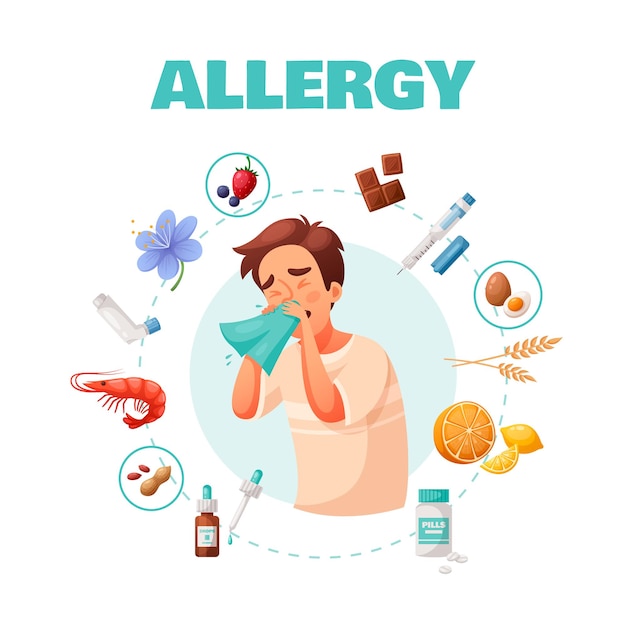
In this blog, we’ll delve into the world of common allergies, exploring their symptoms, causes, and effective treatments. Plus, we’ll share some natural remedies, prevention tips, and insights into potential complications to help you take charge of your well-being. So, let’s embark on this allergy-free journey together and uncover the secrets to living life to the fullest!
Symptoms of Allergies
Allergies often come with their own language, expressing themselves through various symptoms. From sneezing, runny nose, and itchy eyes to skin rashes and digestive troubles, we’ll break down the common signs that may signal an allergic reaction.

This can cause a variety of symptoms, including:
- Swelling
- Hives
- Nausea
- Fatigue
- Congestion
- Runny nose
- Swollen eyes
- Breathing difficulties
- Lightheadedness
- Loss of consciousness
Skin Allergies: The Itch That Needs Attention

Skin allergies can be particularly bothersome, literally leaving you scratching your head!
Skin allergies can be a telling sign of an underlying allergy or a direct result of exposure to specific allergens. For instance, consuming a food you’re allergic to might lead to tingling sensations in the mouth and throat, accompanied by the appearance of a rash. On the other hand, contact dermatitis arises when your skin comes into direct contact with an allergen, such as a cleaning product or plant.
Common types of skin allergies include:
- Rashes: Irritated, red, or swollen areas of the skin that may be painful or itchy.
- Eczema: Inflamed patches of skin that can itch and sometimes even bleed.
- Contact Dermatitis: Red, itchy patches of skin that develop shortly after contact with an allergen.
- Sore Throat: Irritated or inflamed pharynx or throat.
- Hives: Red, itchy, raised welts of varying sizes and shapes on the skin’s surface.
- Swollen Eyes: Watery or itchy eyes with a “puffy” appearance.
- Itching: Irritation or inflammation on the skin.
- Burning: Discomfort and stinging sensations on the skin due to inflammation.
Rashes are one of the most prevalent symptoms of a skin allergy. It’s essential to learn how to identify different types of rashes and treat them appropriately for effective management.
Causes
Ever wondered what causes allergies to act up? From airborne allergens like pollen and pet dander to food culprits like nuts and shellfish, we’ll unravel the mystery behind the triggers that send your immune system into overdrive.
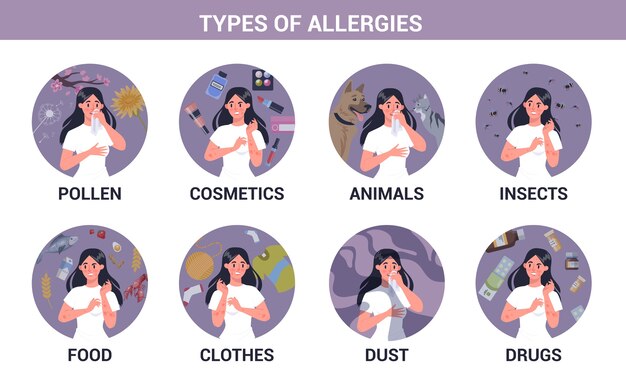
The precise reasons why the immune system triggers allergic reactions in response to harmless foreign substances remain a mystery to researchers. However, it is understood that allergies have a genetic component, meaning parents can pass down a general predisposition to allergic reactions to their children. However, specific allergies are not directly inherited. For instance, if your mother is allergic to shellfish, it does not necessarily mean you will be too.
Common types of allergens that can provoke allergic reactions include:
- Drugs: Penicillin and sulfa medications are frequent causes.
- Foods: It’s normal to have allergies to nuts, milk, wheat, shellfish, and eggs.
- Bee stings, wasp stings, and mosquito stings can all cause allergic reactions.
- Mold: Allergic responses can be brought on by airborne mould spores
- Plants: Common plant allergies include pollen from grass, weeds, and trees and resin from plants like poison ivy and oak.
- Other allergies include latex, which is frequently present in condoms and gloves, and metals like nickel.
Seasonal allergies, also known as hay fever, are among the most prevalent allergies. These allergies are caused by pollen released by plants and can lead to symptoms such as itchy and watery eyes, runny nose, and coughing.
Food allergies are on the rise, and it’s essential to be aware of the most common types, including their associated symptoms, for proper management and prevention.
Home Remedies and Prevention Tips for Allergies
Nature has a treasure trove of remedies to offer! Discover the power of natural allergy treatments, including herbal remedies, essential oils, and homeopathic solutions to ease your symptoms naturally.

Here are some natural approaches to help you manage allergies:
- Nasal Irrigation: Use a saline solution to rinse your nasal passages and reduce nasal congestion. This simple technique can flush out allergens and provide relief from sneezing and a runny nose.
- Steam Inhalation: Inhaling steam can help open up congested nasal passages and ease breathing. Add a few drops of essential oils like eucalyptus or peppermint for added benefits.
- Honey: Consuming locally sourced honey is believed to offer relief from seasonal allergies. The small amounts of pollen in honey may help your body build tolerance to allergens over time.
- Quercetin-Rich Foods: Incorporate quercetin-rich foods like onions, apples, and berries into your diet. Quercetin is a natural antihistamine and can help reduce allergy symptoms.
- Probiotics: Gut health plays a significant role in immune function. Consuming probiotic-rich foods like yogurt or taking probiotic supplements may support your immune system and reduce allergy symptoms.
- Turmeric: Turmeric contains curcumin, which has anti-inflammatory properties. Adding turmeric to your diet or taking curcumin supplements may help alleviate allergy-related inflammation.
- Avoid Triggers: Identify and avoid allergens that trigger your symptoms. Keep windows closed during high pollen seasons, use air purifiers, and limit outdoor activities on windy days.
- Clean Living Space: Regularly clean and dust your living space to reduce indoor allergens like dust mites and pet dander.
- Wash Bedding: Wash your bedding regularly in hot water to eliminate dust mites and allergens that can accumulate over time.
- Keep Pets Clean: Bathe and groom pets frequently to minimize pet dander, a common allergen.
- Pollen Avoidance: Check pollen forecasts and try to stay indoors during peak pollen times. When outdoors, wear sunglasses to protect your eyes from pollen exposure.
- Allergy-Proof Your Bedroom: Invest in allergen-proof pillowcases and mattress covers to create a barrier against allergens while you sleep.
- Hydration: Drink plenty of water to help thin mucus and ease congestion.
Remember, while home remedies can offer relief for mild allergy symptoms, consulting with a healthcare professional for severe or persistent allergies is essential.
Takeaway: Allergy-Free Future
As we conclude this informative journey on treating and preventing common allergies, we hope you feel empowered to take charge of your health. Armed with the knowledge of symptoms, treatments, natural remedies, prevention, and potential complications, you’re well-equipped to embrace an allergy-free future and live life to the fullest.


